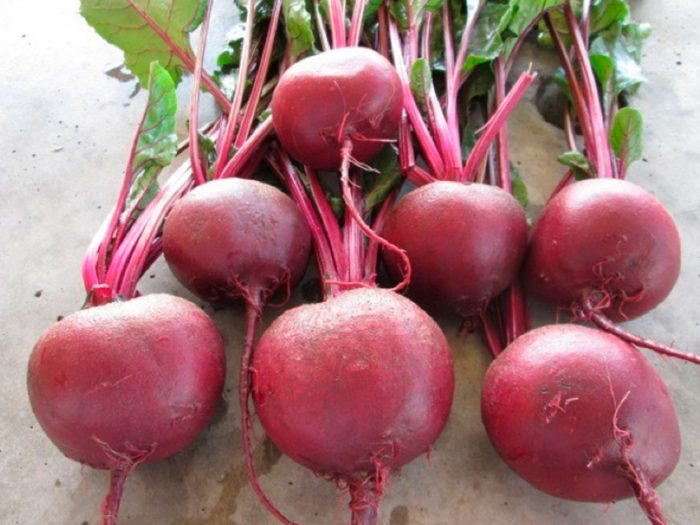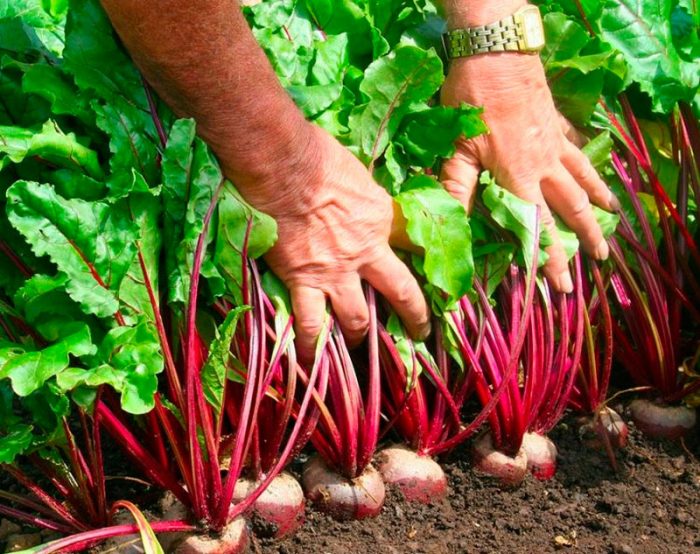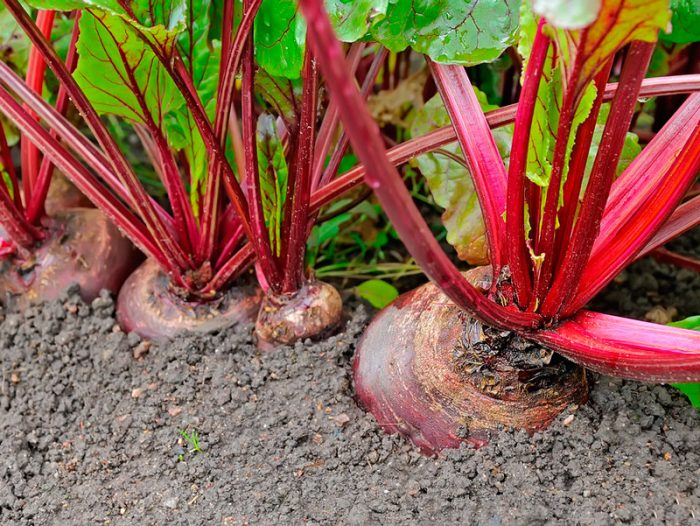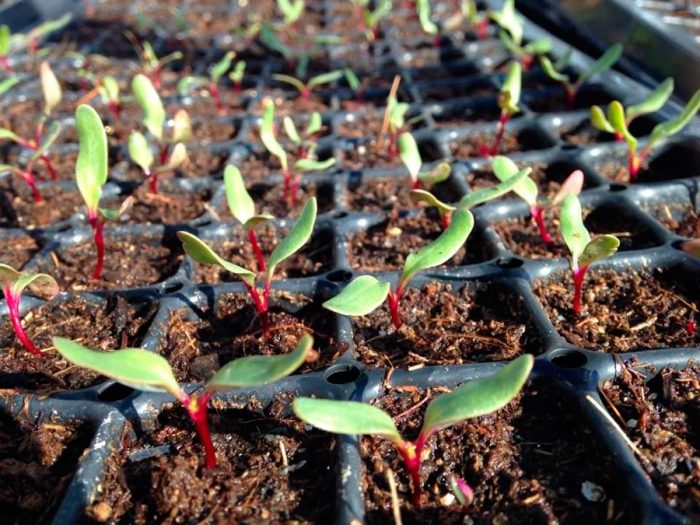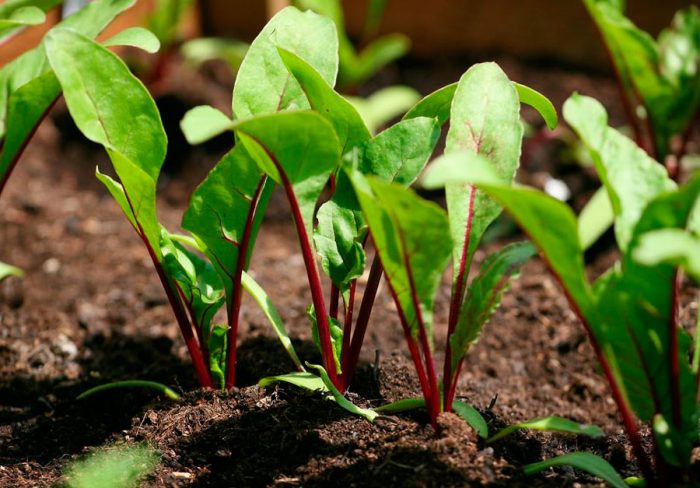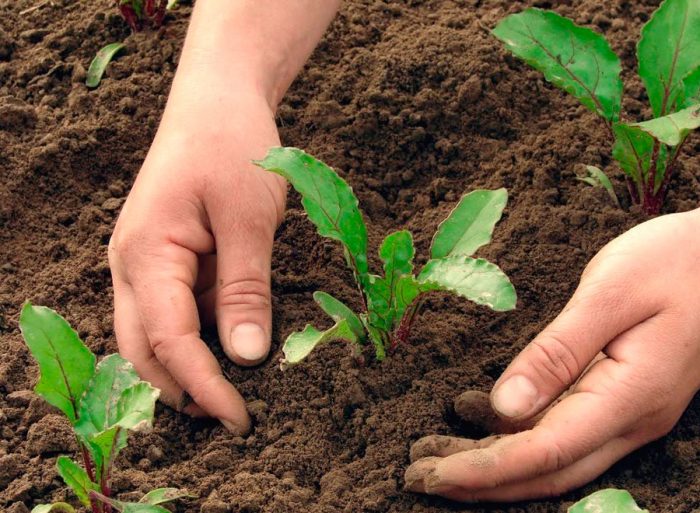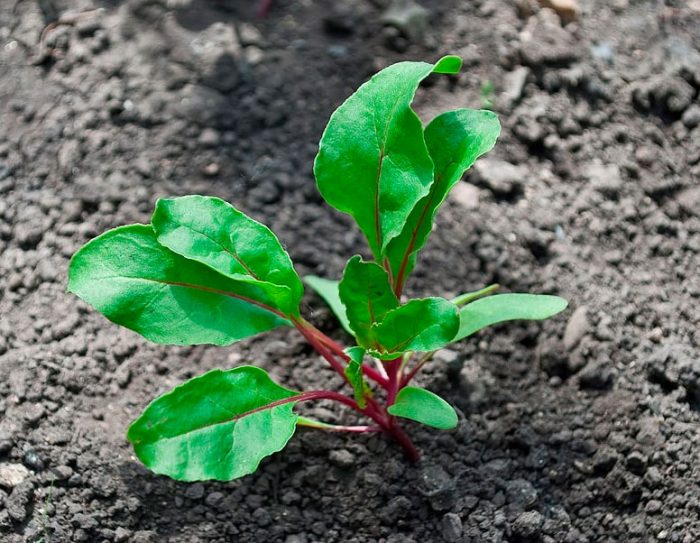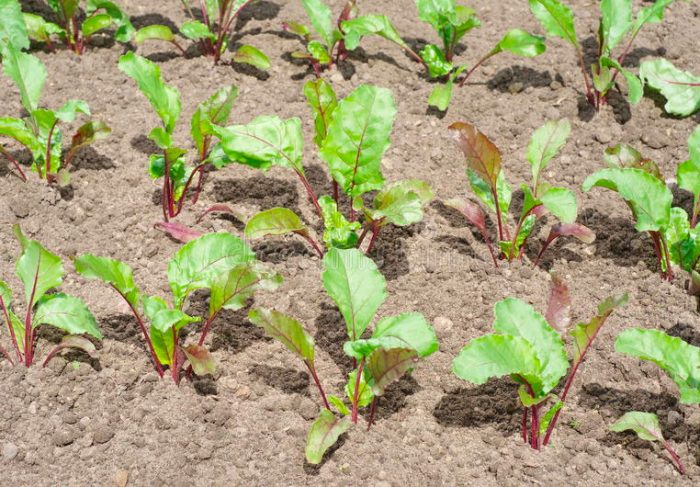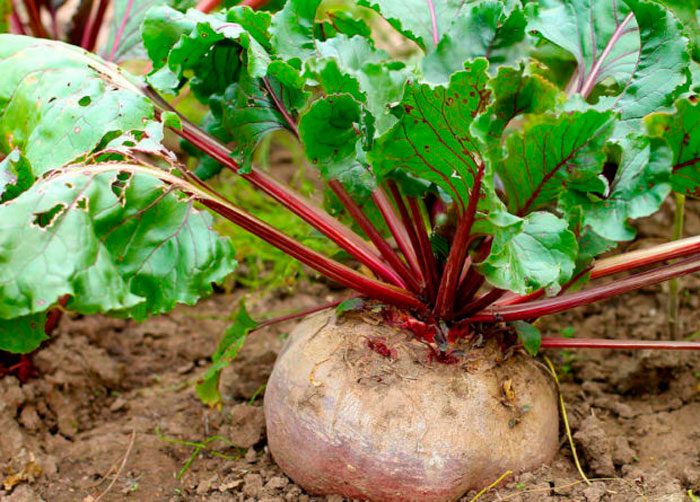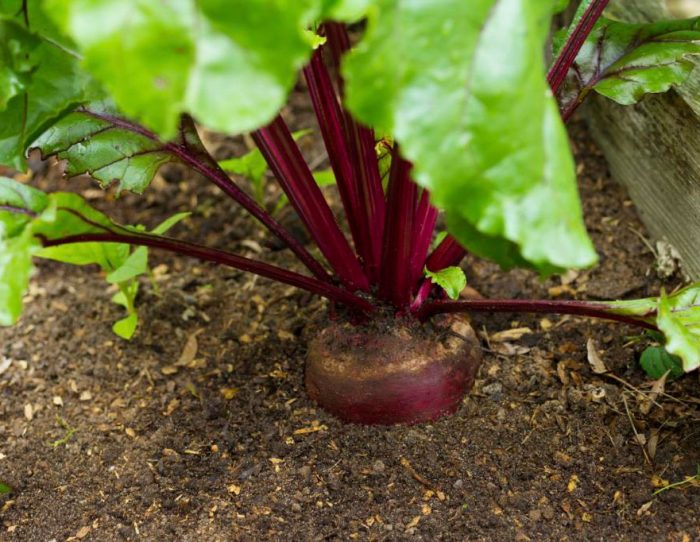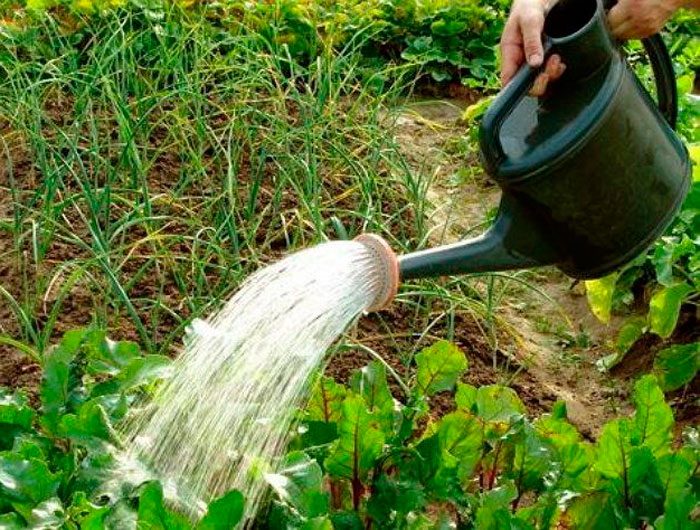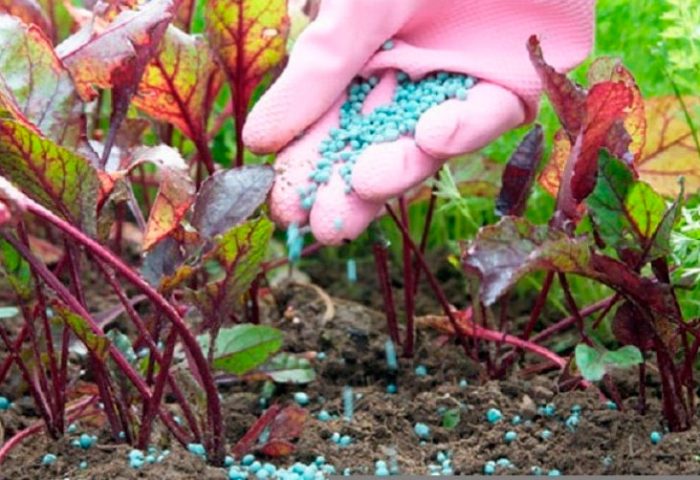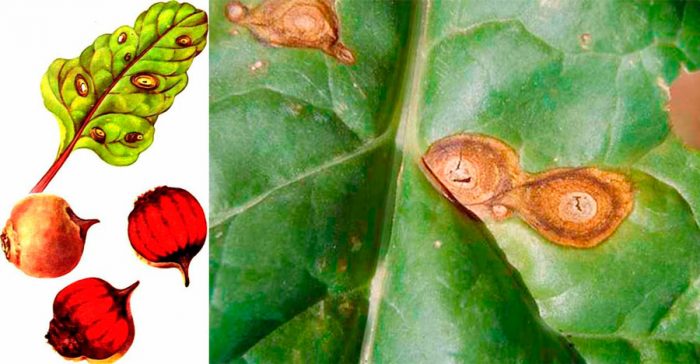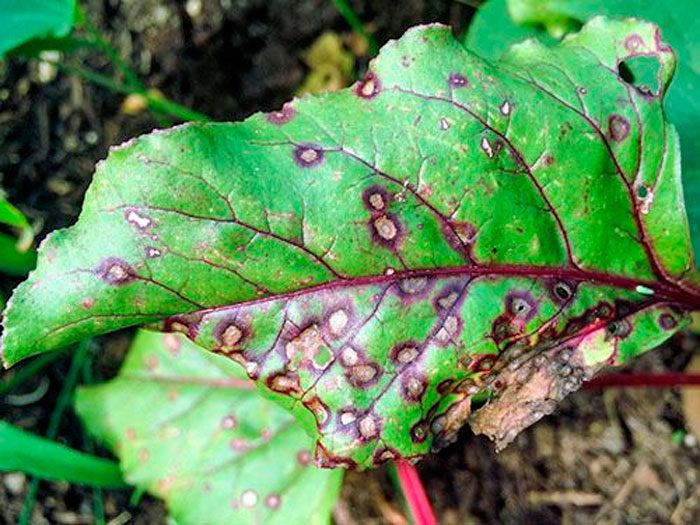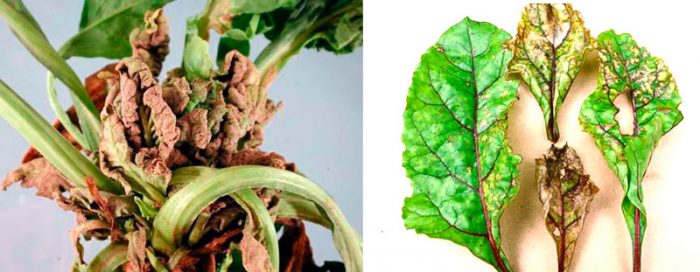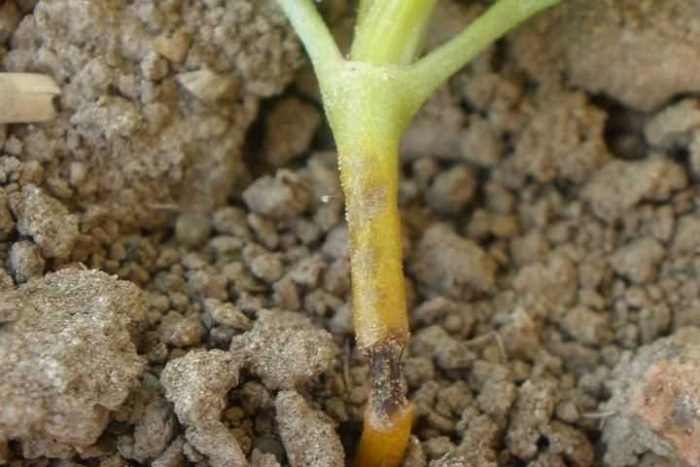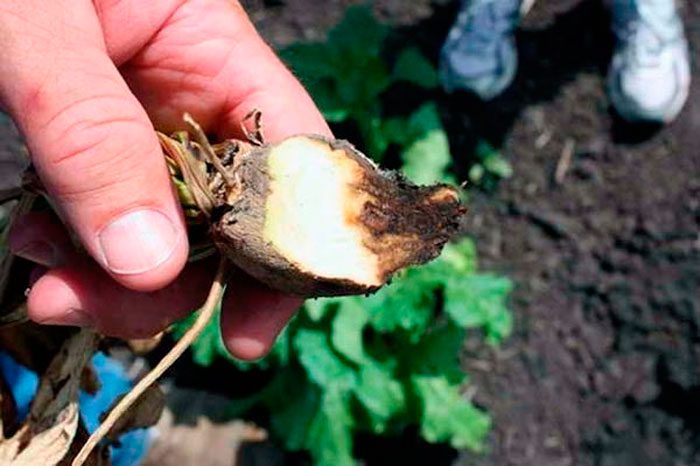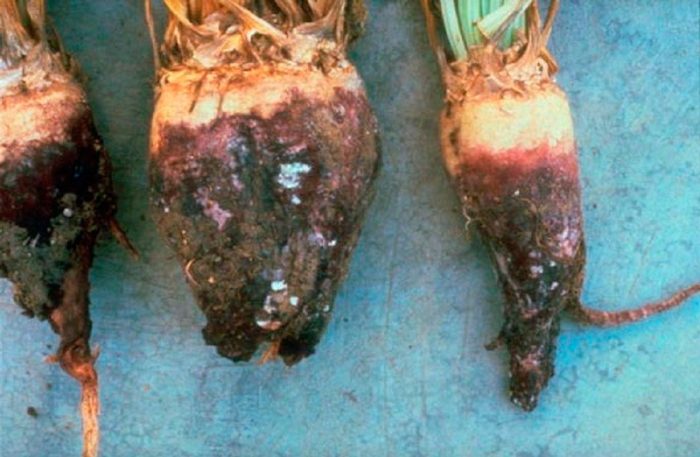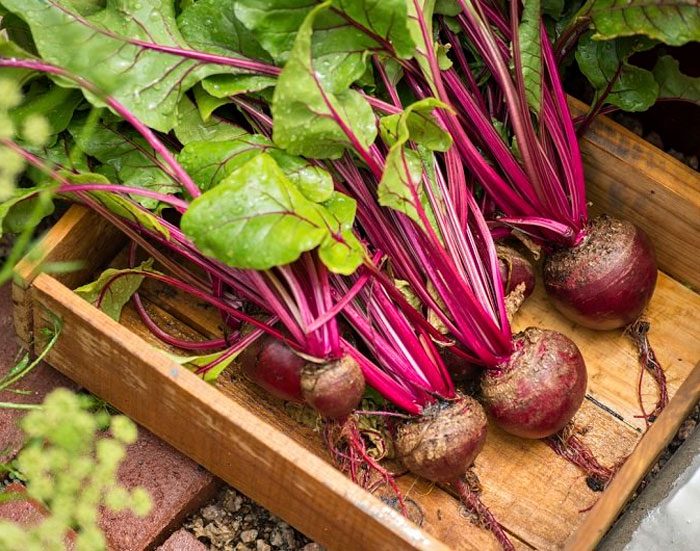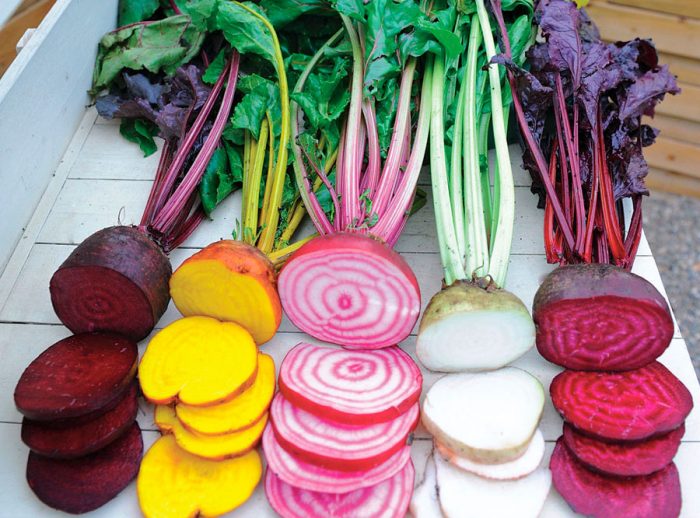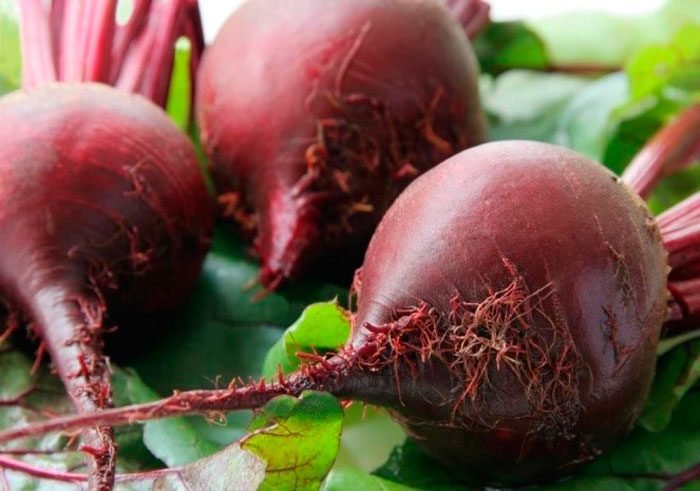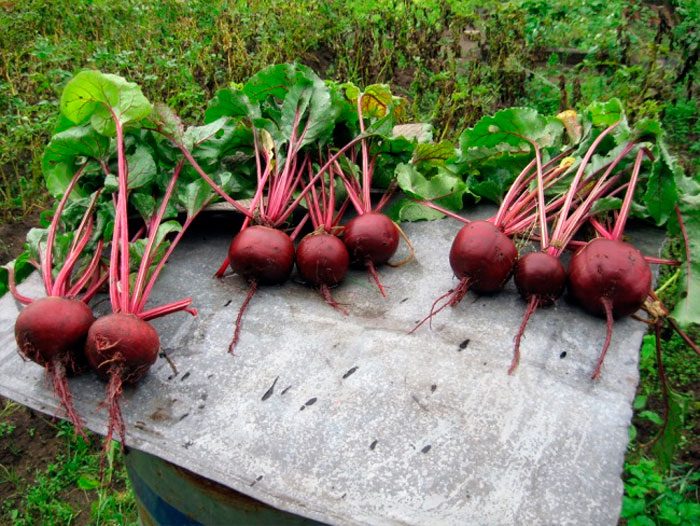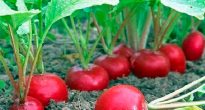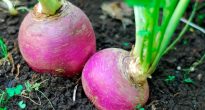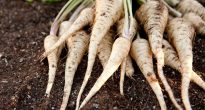Beetroot (Beta) is represented by annual, biennial and perennial herbaceous plants, which are members of the Amaranth family. However, more recently, such a culture was reckoned to the Marevye family. In Belarus, this plant is called beetle, and in Ukraine - beetle. In this genus, the main representative is common beet, it has 3 varieties, namely: fodder beets, table beets and sugar beets. Such a vegetable plant grows on almost all continents except Antarctica. The wild beet, which is considered the progenitor of cultivated species, was used as food and as a medicinal plant in ancient Babylon. Of greatest interest is the fact that at first only foliage was eaten, while root crops were used only for medicinal purposes. In ancient Greece, beets were sacrificed to Apollo as one of the most valuable plants. Only at the beginning of our era were cultivated forms of root beet developed, while in Kievan Rus they began to grow in the 10-11th century. In the 16th century, fodder beets were developed in Germany. And they began to breed sugar beets in 1747, after it became known that their roots contain the same sugar as cane. Today sugar from beets is much more popular than cane sugar in most countries. At the same time, common beet (Beta vulgaris) is considered a valuable agricultural crop, rich in potassium, folic acid and antioxidants that are necessary for the human body.
Content
Brief description of cultivation
- Sowing... Seeds are sown directly into open soil before winter or in spring, after the air outside warms up to at least 8-10 degrees. Early varieties of beets are grown through seedlings, while sowing is carried out in April, and planting of plants in open soil after 12 weeks (in the first half of May).
- Illumination... The site must be well lit.
- Priming... It grows best on loam, peat, medium loamy chernozem, while the soil should be slightly alkaline or neutral. Beets are not grown in the area where compost or fresh manure was introduced into the soil.
- Predecessors... Recommended: cereals and legumes, eggplants, cucumbers, tomatoes, onions, peppers. Bad: carrots, beets, chard, potatoes, all types of cabbage and other cruciferous crops.
- How to water... Watering should be systematic 3 or 4 times per season, this is done only after the top layer of the soil dries well, while in the dry period it should be abundant. It is best to use sprinkling. When irrigating, 2-3 buckets of water should be used for 1 square meter of a garden bed. When 20 days remain before harvest, the bushes stop watering.
- Fertilizer... When the beets are thinned for the first time, they need to be fed, for this they use a solution of mullein (1: 8) or bird droppings (1:12), while 1.2 liters of nutrient mixture is taken per 1 square meter of the plot. After the tops of the bushes close, wood ash should be distributed over the surface of the site, 1 full glass is taken per 1.5 square meters of the garden, then it must be watered.
- Reproduction... Generative (seed) way.
- Harmful insects... Miner flies and beetroot flies, aphids, scoops, flea beetles and beet flies
- Diseases... Red rot (or felt disease), fusarium (or brown rot), root rot, peronosporosis, cercospora, phomosis.
Features of beets
The root of beets, called the root vegetable, is very thick, juicy and fleshy. In most of the varieties, the root crop is not completely immersed in the ground during growth, but protrudes slightly above the surface of the site. During the first year of growth, the development of only one rosette is observed, consisting of naked large basal long-petiolate leaf plates, they have an ovoid shape, and a root crop also grows. In some cases, at the end of the first year, but as a rule, this happens in the second year, a highly branched erect stem, which has a faceted shape, grows from the center of the outlet, its height can vary from 50 to 100 centimeters. On it there are small, almost sessile, alternately arranged leaf plates, in their axils small sessile flowers of a pale color grow in bunches, they are part of complex spike-shaped inflorescences. The fruit is a compressed single-seed.
This plant has various beneficial properties, which are associated with the fact that the composition of the root crops contains iron, organic acids and fiber. Due to this, beets are often used in the treatment of kidney stones, scurvy, hypertension, diabetes mellitus and other diseases. Fresh juice of this culture has the greatest healing effect.
Growing beets from seeds
Sowing
Beets are grown in open soil, while this can be done both through seedlings and by a non-seedling method. This plant is frost-resistant, it is sown in open soil no earlier than the air warms up to 6-8 degrees, but the bushes begin to develop fully only after the outside temperature rises above 16 degrees. It should also be taken into account that if the seedlings fall under frost, then they will stop growing the root crop, while the bushes will begin to shoot.
In order for the sprouts to appear as soon as possible, the seeds need to be soaked, for this they are immersed in cold water for 24 hours or in lukewarm water for 30 minutes (35 degrees). The seeds should be buried 20-30 mm in the soil, while the row spacing depends on the variety and can be 7 centimeters if you need small roots for conservation, and 30–35 centimeters - when growing large beets. In the first case, the distance between the bushes in a row should be 50–60 mm, while in the second - about 100 mm.
Since most varieties have 2-3 seeds collected in seedlings, the seedlings are shown in clusters, which is why they need to be thinned out at an early stage of development, they do this during the formation of the first pair of true leaf plates.When thinning between the bushes, a distance of 30 to 40 mm must be left. Excess plants can, if necessary, be transplanted to another place, since they take root extremely quickly at this stage of development. Thinning and weeding are carried out at the same time, then the surface of the bed is covered with a layer of fine organic mulch, for example, sawdust can be used. The second time it will be necessary to thin out the seedlings after they have 2 pairs of true leaf plates, while the root crop should reach 15 mm in diameter. After the second thinning, the distance between the plants should be from 60 to 100 mm. You need to thin and weed the beets after rain or watering.
Growing beet seedlings
Only early varieties of beets are grown through seedlings, which contain a large amount of carotene and vitamin C, as well as calcium salts, phosphorus, betanin, iron and other biologically active substances. Young beets are as valuable as early vegetables such as lettuce, radishes and green onions. Experienced gardeners recommend choosing those varieties for growing seedlings that are resistant to flowering: K-249, Polar flat, Cold-resistant 19.
Sowing seeds for seedlings is carried out 20 days before transplanting seedlings into open soil. Before sowing, they must be prepared. In order to disinfect the seeds, they are soaked in a weak solution of potassium manganese. Then the seed is placed in a humid environment for two or three days so that sprouts appear. The seedling box is filled with light moist soil mixture, which is spilled with Fitosporin solution in advance, which will save the seedlings from the black leg. The seeds are evenly distributed over the surface of the substrate, and then they are covered with a thin layer of the same soil mixture. Then the box is removed to the greenhouse.
Such seedlings must be looked after in the same way as any other. The substrate should be constantly slightly damp, the temperature should be unchanged, while the seedlings should be ventilated every day.


Watch this video on YouTube
How to dive seedlings
It is necessary to dive the seedlings in the same way, at the same time and at the same interval as during the thinning of seedlings when growing in open soil (see above). The pick is carried out only once. However, if the sowing of seeds is carried out not in a common box, but in individual cups, then it will be possible to do without picking, while the plants are planted in open soil directly in containers.
Planting beets in open ground
What time to plant
Beets are planted in open soil in mid-May, while the seedlings should have from 4 to 5 true leaf plates. But it should be borne in mind that planting of seedlings can only be carried out when the soil warms up well, while its temperature at a depth of 80-100 mm should be equal to 8-10 degrees. That is why a site suitable for growing this crop must be necessarily sunny.
The soil
Before you start sowing, you should choose a suitable place and prepare the soil. Best of all, such a culture grows on nutritious loose soil, for example, medium loamy chernozems, peatlands, which should be neutral or slightly alkaline pH from 5 to 8. If the soil is excessively alkaline or acidic, then the plants begin to hurt. A plot in the soil of which compost or fresh manure was applied can be used for growing beets only after at least three years. Good predecessors of this crop are: onions, tomatoes, cucumbers, grains, eggplants, peppers and legumes. Such a plant should not be grown on an area where chard, carrots, all types of beets, potatoes, rapeseed and any cabbage had previously grown.
At the beginning of spring, during the digging of the soil, it should be added from 15 to 20 grams of ammonium nitrate, from 30 to 40 grams of superphosphate, from 20 to 30 grams of sulfuric acid ammonium and from 10 to 15 grams of potassium chloride per 1 square meter of the site ...If the soil is acidic, then during the digging it is necessary to add 0.5-1 kg of fluff lime per 1 square meter of the plot, while 2-3 kilograms of humus are introduced into the poor soil.
Planting rules in open soil
The size of the root crop directly depends on the density of crops: the smaller the distance between the plants, the less large the root crops will be. However, it should be borne in mind that medium-sized roots are much tastier than large ones, moreover, the latter contain much more nitrates, and they are also inconvenient to use. In order for the root crops to be sweet and juicy, seedlings are planted on a cloudy day, while the distance between the plants should be from 40 to 50 mm, and the distance between the rows should be about 25 centimeters. In transplanted plants, their central root must be shortened by 1/3 part. When the seedlings are transplanted into open soil, so that they take root as soon as possible, they must be shed with a humate solution, while at first they need protection from direct sunlight, for this they use a non-woven material that is pulled over arcs installed along the entire length of the beds. When the roots of the accepted and matured seedlings reach 15 mm in diameter, they will need thinning, while the distance between the bushes should be from 8 to 10 centimeters. And in July, after the foliage of the beets has almost closed, the shelter must be removed, while the surface of the site is covered with a layer of mulch, which will reduce the number of weeding and watering.
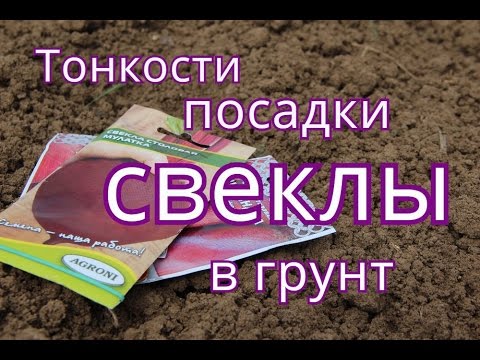

Watch this video on YouTube
Winter sowing
Sowing beets before winter is carried out in the last days of October or the first - in November. The site must be dug up in advance and the necessary fertilizers are added to it, then grooves are made on it, the distance between which should be from 15 to 20 centimeters, seeds are sown in them at the rate of 2 to 3 grams per 1 square meter. Also, sowing in open ground can be carried out in the same way as described above. It is necessary to deepen the seeds into the soil by 30–40 mm. When sowing in winter, the garden bed must be sprinkled with a layer of mulch (peat or humus).
Beet care
Young beets should be weeded, watered, and loosened between the rows in a timely manner. To significantly reduce the number of such procedures, the site is covered with a layer of mulch.
It is necessary to loosen the soil surface between the rows to a depth of 40 to 60 mm, this will destroy the soil crust, which makes it difficult to aerate the roots. The crust is especially harmful to the plants during the development of the first 2 pairs of true leaf plates, since at this stage of beet growth, root molt is observed, which contributes to growth retardation and forces the plant to show very high demands on growing conditions.
Treatment
Weeds can drown out beets while they are still very young. The fact is that before the appearance of 4 or 5 of a real leaf plate, the bushes grow extremely slowly. Before the seedlings appear, you can fight the weeds by treating the area with tractor kerosene, while 35 to 50 mg is taken per 1 square meter of the area. And after the plants have 2 or 3 pairs of true leaf plates, the area is treated from weeds with a solution of sodium nitrate. After the plants gain strength, the weed is unable to harm them.
How to water
This crop can normally tolerate a not very long drought, but in order for the harvest to be rich and the roots of high quality, the area must be watered systematically, especially in the hot dry period. Watering is carried out after the topsoil dries well. It is best to carry out this procedure in the evening and sprinkling is well suited for this, since in this case the foliage is washed and refreshed.If the bed is not mulched, then a day after watering it is necessary to loosen the soil surface between the rows to a depth of about 40 mm. To make the beets more sugary, add 1 tbsp to 10 liters of water intended for irrigation. l. table salt.
If you water the area too often and strongly, then this can also harm the beets, since stagnant water can cause the development of fungal diseases. On average, during the season, such a crop will need to be watered 3 or 4 times, while 20-30 liters of water are taken per 1 square meter of the plot. When there are 15 to 20 days left before harvesting, watering must be stopped, due to this, the sugar content of the root crops will increase, and they will also be much better stored.
Beet feeding
It is recommended to use organic fertilizers to feed such a crop. If you use mineral fertilizers, then the roots may crack and voids will appear in them.
After the young plants are thinned for the first time, they will need nitrogen-containing fertilizers, for this you can use a solution of mullein (1: 8) or bird droppings (1:12), while 1.2 liters of nutrient mixture is taken per 1 square meter of the plot ... It is best to make grooves, while it is necessary to retreat from the seedlings about 50 mm, and already the nutrient solution is poured into them. After the tops have closed in the garden, the plants will need to be fed with potash fertilizers, for example, you can take wood ash (for 1.5 square meters of a plot of 1 tbsp.), Then the plot must be watered.
Also, this culture can be fed on foliage, while this method has a number of advantages:
- when root feeding, nutrients are absorbed more slowly than when fertilizer is sprayed onto the foliage surface;
- nutrients are absorbed much better, since when they enter the ground, some of them can acquire a form that is inaccessible to plants;
- feeding beets on foliage is recommended only when it is no longer possible to add nutrients to the soil without harming root crops;
- when feeding on foliage, the distribution of nutrients is more even, due to this, there is no accumulation of substances, and the risk of overdose is also reduced.
So that this culture does not feel the lack of boron, molybdenum and copper, such substances are used for foliar feeding. Beets are also sprayed over the foliage with milk of lime (0.2 kg of lime per 10 liters of water), it feeds root crops with such an important element as potassium. The foliage is also treated with a saline solution (60 grams of salt is taken for 1 bucket of water, which should not be iodized), it is able to saturate the roots with sodium, and also provide protection to plants from a summer fly or a white butterfly.
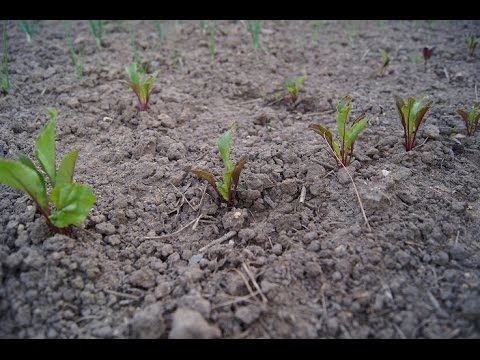

Watch this video on YouTube
Diseases and pests of beets
Diseases with photos and names
Beetroot can get sick with cercosporosis, rootworm, phomosis, peronosporosis and rot. In order to understand what kind of disease struck the beets, you need to know its main symptoms.
Fomoz
Most often, the development of phomosis occurs due to a lack of boron in the soil, which is why it is very important to timely feed this culture with microelements. If the plant is affected by this fungal disease, then concentric specks of pale yellow or brown color appear on the lower leaf plates of the rosette, and black dots form on their surface. Over time, dry rot of the heart develops, in the inner part of the root, the tissues become dark brown. Phomosis is actively developing due to fogs, frequent prolonged rains and high humidity. As soon as the first signs of phomosis are found, the plants need to be fed with the root method as soon as possible (3 grams per 1 square meter of the garden), then the bushes are sprayed over the foliage with a solution of boric acid (for 1 bucket of water ½ tsp).Next year, boric acid must be added to the soil (3 grams per 1 square meter).
Cercosporosis
A disease such as spotting (cercospora) contributes to the destruction of 70 percent of the entire crop of this crop, while the foliage is affected in the bushes, as a result of which it dies, and because of this, the keeping quality and quality of root crops deteriorate.
If there are small specks of light color on the front surface of the foliage with a pale red border, while there is a grayish bloom on the seamy surface, you will need to add potassium chloride to the soil. In order to prevent the seed, pre-sowing preparation will be needed, for this, the drug Agat-25 is used, while you must strictly follow the instructions, and before direct planting, the site must be treated with a fungicidal drug.
Peronosporosis
Downy mildew (downy mildew) - this disease is no less dangerous for beets than simple powdery mildew. A violet-gray bloom appears on the seamy surface of the foliage of the affected plant, then the edges of the leaf plates roll downward, after which they become faded, dry out, and their crumbling begins in dry weather or decay - in rainy weather. At the same time, the harvested roots are notable for poor keeping quality, they quickly rot. In order to prevent sowing, before sowing, it is necessary to soak in Apron's solution, and before the formation of root crops begins, the bushes are sprayed with a fungicidal preparation.
Corneed
Such an infectious disease as root eater affects young seedlings, their stems turn black, their thinning is observed, and as a result the seedlings die. Most often, the defeat of beets is observed on heavy soils, and most actively such a disease develops due to a lack of aeration of the roots, since an excessively dense crust forms on the soil surface, and this also happens due to its very high acidity. For prevention purposes, in the autumn, the soil is lime, and in the spring a solution of borax is introduced into it, and when the seedlings appear, the surface of the garden bed is covered with a layer of mulch (peat or humus).
Fusarium
The defeat of this culture with Fusarium rot occurs in the first summer weeks, and brown - in the middle of summer. Plants that were weakened by drought and heat or injured during loosening are affected by such a disease. In diseased bushes, the lower leaf plates wither, and the petioles at the base turn black. Root crops crack, while a white substance appears in the cracks.
Brown rot develops due to the large amount of nitrogen in the soil and high humidity. A gray felt bloom appears on the petioles, leaf plates and the surface of the soil. In order to prevent the beets, it is recommended to feed the foliage with a boron solution, lime must be added to the acidic soil, and the soil surface between the rows after watering should be deeply loosened. Those root crops that are affected by rot are not suitable for long-term storage, and they also cannot be left on the site.
Felt disease
Felt disease (red rot) also poses a special danger to beets, it can still affect carrots and other root crops. In bushes affected by such a disease, many brown spots appear on the surface of the root crop, while over time they sell, and instead of them sclerotia of the fungus is formed. This disease is dangerous because healthy roots during storage can be infected from sick. If during harvesting vegetables affected by felt disease are found, they must be stored separately. Experienced gardeners recommend using such root crops to prepare blanks for borscht, for this they are subject to mandatory heat treatment.
Pests
Most often, beetroot is harmed by such insects as: miner or beet flies, beet aphids, shield beetroots, scoops and fleas. For the purpose of prevention, it is necessary to systematically remove weeds from the rows and rows, and in the fall they carry out a deep digging of the site.
If aphids have settled on the bushes, it is recommended to spray them with infusion of onion husks, you can also use the Iskra Bio remedy, but only as a last resort. To get rid of flies, you can use Karbofos or Spark. To destroy the flea, the aerial part of the bush must be powdered using tobacco dust, wood ash, or spray the previously moistened foliage with ash infusion three times. You can get rid of winter, garden, cabbage scoops and scoops by using bacterial agents: a solution of gomelin (0.5%) or bitoxibacillin (1%).
Harvesting and storage of beets
If early varieties of beets are grown, then harvesting can be carried out already in July, by which time the root crops can reach 5-14 centimeters in diameter. But what is the best time to harvest beets that are meant to be stored in the winter? Beet harvesting begins only after the foliage turns yellow and dries up. As a rule, this is observed in the last days of August or the first days of September. When this happens, wait another 7 days, and then dig out the root vegetables, do it on a cool, fine day. To dig up root crops, you need to use a pitchfork, they do it very carefully, trying not to injure them. Then they are pulled out of the ground by hand, the remains of the earth are removed from the surface. The tops should be cut with a very sharp knife, while the length of the remaining petioles should be 20 mm. After that, the roots must be laid out in the area where they should dry well. Then remove the remaining soil from the beets, after which it should be sorted out, while the injured, rotten, as well as all suspicious root crops should be discarded. All other vegetables are stored in a well-ventilated dry room, while they should not be exposed to direct sunlight, they will stay there for 7 days until they finally dry out. Experienced gardeners process beets that are not suitable for storage, and use them to prepare dressings for beetroot and borscht.
In order for the beets to be well stored in winter, for this, the air humidity in the room should not exceed 90 percent, while the optimum temperature is 0-2 degrees. If the room is warmer, then there is a rapid wilting of root crops, they can also get sick or rot. These vegetables also need to provide good ventilation in the room. The containers in which the vegetables are folded cannot be placed directly on the floor; for this, a stand is used, the height of which should be about 15 centimeters, thanks to this the air will be able to cool the lower vegetables in the box, as they should not fog up and overheat. It is recommended to store root vegetables in trellised containers made of wood or plastic, then they are placed on a stand, while the distance between the wall and the container should be at least 10–20 centimeters. Before putting vegetables in a container, they must be powdered with chalk.
If possible, the beets are laid out for storage on top of the potatoes, in this case the tubers will not get wet, since the beets are able to absorb excess moisture, which in turn will not let it dry out. Also, when laying root crops for storage, they can be sprinkled with sand. And you also need to take all the necessary measures to protect your cellar from rodents.


Watch this video on YouTube
Types and varieties of beets
In the genus there are 2 cultivated and 11 wild types of beets. Creeping beets, large-rooted beets, coastal beets, intermediate beets, spreading beets, and others are considered as wild species. Biennial plants such as common beet and leaf beet are considered to be cultivated species.Over time, thanks to selection, the following varieties appeared: sugar beets, fodder and table beets (either vegetable or red). The flesh of beetroot is purple-red, dark red or burgundy, leaf plates are red or green with red petioles. The root vegetable contains sugar, protein, organic acids, mineral salts, vitamins C, B, PP, etc., as well as fiber. There are 3 varieties of beetroot:
Vindifolia - The foliage and petioles are green, they do not fade until the full maturity of the root, which has an elongated-conical shape. Often, the root crop is branched.
Rubifolia - The foliage has a dark red or red color. The shape of the roots is flat-rounded, round or elongated-conical, their flesh is red-purple. This variety is not productive.
Atroruba - The pulp and surface of the root vegetables are dark red. The color of young foliage is dark green, the petioles are red, and the veins are purple-red. This variety has 4 varieties:
- Egyptian beets - the root crop of such an early-ripening variety is flat-rounded or flat, it weighs 0.2-0.5 kg, tender flesh and skin of a dark red color, its rings are pale purple;
- Bordeaux cultivar of medium ripening - rounded or oval roots with almost uniform dark red flesh, dark green or green leaf plates have pink-red petioles;
- the Eclipse variety is a relatively early ripening variety that has oval or rounded roots, they are painted in the same color as the Egyptian variety, however, the foliage and petioles of this variety have a paler color;
- cultivar Erfurt - such late-ripening cultivars are resistant to drought, the duration of the growing season is 130–150 days, the shape of root crops can be fusiform or elongated-conical, sometimes with branching, they are quite difficult to extract from the soil, but they contain a large amount of sugars and dry substances.
Usually gardeners prefer to classify this crop according to the ripening period, and also according to the color and shape of the roots. The varieties that are most popular will be described below.
Early varieties
- Vinaigrette Jelly... The variety has excellent keeping quality. Flat, large fruits can weigh about 0.5 kg, the bright red flesh is firm and very tasty.
- Libero... This variety has a high yield and excellent keeping quality. The round and smooth root vegetable has a red color, its weight is about 250 grams. The flesh is very juicy and red, and there are almost no pale rings in it.
- Incomparable А 463... This frost-resistant variety is suitable for growing in Siberia. The flattened roots are colored burgundy-red, their weight is about 0.4 kg.
Medium ripening varieties
- Nosovskaya flat... This variety is resistant to heat, shooting, and also has excellent keeping quality. The flattened roots have a mass of about 0.3 kg. The pulp is red, juicy and very firm.
- Larka... The Dutch variety has excellent keeping quality, and there is also information that it helps to cleanse the body of radionuclides. Dark red rounded root crops weigh about 0.3 kg, the solid red pulp is very juicy.
- Dark girl... The flattened root vegetable has a dark red color, it weighs about 500 g, the purple-red flesh is very juicy.
- Black woman... This high-yielding variety has elongated dark red root crops weighing about 0.5 kg. The purple-red flesh is tender and juicy. They are used for pickling and fresh consumption.
- Bohemia... The variety is resistant to shooting, harmful insects, it has excellent keeping quality, and seedlings do not need to be thinned out. Burgundy dense roots are round and weigh about 0.5 kg. The pulp is solid dark red color.
Late varieties
- Renova... Such a high-yielding variety does not lose its presentation during storage for 7 months. Smooth cylindrical-oval roots have a dark pink color, their weight is about 0.35 kg. The dark purple flesh is quite firm.
- One-sprout... The variety is distinguished by its yield and excellent taste. Round root vegetables have a tender and juicy dark red pulp. Seedlings do not need to be thinned out.
- Cylinder... Well kept, high-yielding variety resistant to disease. The shape of the root crops is oval-cylindrical; they are about 16 centimeters long and weigh up to 0.25 kg. The dark red solid color pulp is very tender.
- Ataman... The frost-resistant variety has good keeping quality. Cylindrical burgundy roots weigh 0.2–0.3 kg and can be easily removed from the soil. The almost uniform pulp is juicy and tender.
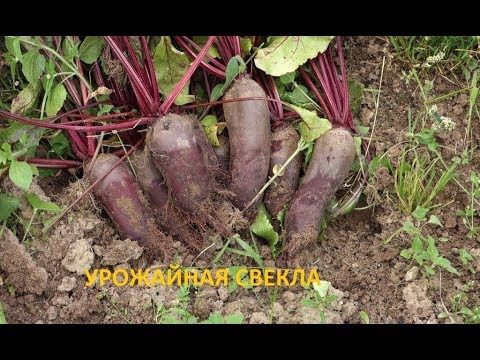

Watch this video on YouTube

